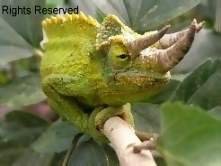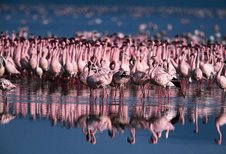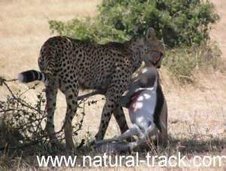Kenya wildlife safaris: African rhinos
In Africa today, the fight for growth of the rhino population is an everyday activity. After being declared an endangered species, Kenya has put up big efforts financially to see to it that their habitats have been safe guarded.
The rhino belongs to the family Rhinoceroteridae. They are 5 species placed in 4 genera. Three of these species are found in south-central Asia and the other two live in Africa – south of the Sahara.
They inhabit savannahs, shrubby regions and dense forests. The African species live in more open areas than do the Asian species. Their habitat has to generally have access to water as they usually drink everyday.
Their horns are dermal growths originally composed of compressed keratin. Usually they have 1-2 horns. Their horns, their beauty have been their dilemma for ages. Powdered Rhino horn has been used extensively in traditional medicine in Asia and to make ornamental dagger handles in the Yemen. The demand is so great that traders are prepared to pay poachers vast sums to kill rhinos for their horns causing a wholesale slaughter in Kenya.
To stop these abuse, governments and conservation bodies such as Save the Rhino teamed up to halt the cruelty. Thanks to them, the overall decline of the rhino has been halted, and populations in Africa are beginning to stabilize.
Rhinos are known to have poor eyesight but strong hearing and smell. Both hind and forefeet have 3 digits with a small hoof while the tough and wrinkled skin has very few scattered hairs and the tail ends with stiff bristles.
The history of the rhino can be traced back to 45 million years ago. The Baluchitherium, an ancestor of the Indian rhino, was the largest land mammal that ever lived. It was 18 feet high and 36 feet long. It lived over 20 million years ago.
Female rhinos give birth every 2 years to a single calf, which is active soon after birth.
The calf remains with the mother until the next offspring is born. Sexual maturity is reached at 7-10 years for bulls and 4-6 years for cows. They have a life span of up to 50 years and a gestation period of 420-570 days.
Female rhinos give birth every 2 years to a single calf, which is active soon after birth.
The calf remains with the mother until the next offspring is born. Sexual maturity is reached at 7-10 years for bulls and 4-6 years for cows. They have a life span of up to 50 years and a gestation period of 420-570 days.
It is important to note that the African rhinos are more aggressive than Asian species.
They use their horns to attack and toss their enemies and this can be predominantly dangerous and can kill attackers instantly.
African white rhinos have a preference of feeding low to the open grounds whereas the black rhino usually browse on leaves and have a tendency to stay hidden. They have been noted to be more active in the evening, through the night and in early morning, spending their days resting in heavy cover.
Rhinos sleep in both standing and laying positions and love to wallow in muddy pools and sandy riverbeds. They penetrate dense thickets by shear force, often leaving behind trails that other animals later use.
They run with a cumbersome motion, reaching top speed at a canter but can however, attain speeds of up to 45 km per hour for short distances. Unlike the white rhino-calf, the black rhino calf normally runs behind its mother.
Basically the black rhino is more solitary and territorial except for the mother-child unit. Groups of adult cows or bachelor bulls are sometimes formed, however, and during the mating season pairs of rhinos may stay together for up to 4 months.
Rhinos mark their territories with urine and by dropping their dung in well-defined piles that can reach up to 1 m in height. They often furrow the areas around these piles with their horns and make the piles even more conspicuous.
The black rhino has a wide vocal range and can possibly communicate like an elephant, through frequencies below the range of human hearing. Breathing is an important part of communication.
The current available statistics show an estimated 20,000 black rhino in Kenya in the 1970s. By 1982 the population was reduced to fewer than 400. Since then, their number has increased and now stands at over 450. The number in fenced areas has risen at an average rate of four percent each year when the conditions are good.
The current available statistics show an estimated 20,000 black rhino in Kenya in the 1970s. By 1982 the population was reduced to fewer than 400. Since then, their number has increased and now stands at over 450. The number in fenced areas has risen at an average rate of four percent each year when the conditions are good.
Since 1984 the Kenyan government has pursued an active program devoted to the
recovery of Kenya’s black rhino, with efforts centering on the development of specially protected or fenced sanctuaries on government and private land, such as Lewa.
Rhino populations under custodianship both on private land (Solio Ranch) and in some State-run areas (such as Nairobi and L. Nakuru National Park) have provided set up for new populations (including reintroducing animals into an electrified-fence sanctuary inside the KWS-run Tsavo West and Meru National Parks). The private sector thus plays an important part in the conservation of rhino in Kenya and currently supplies many of the animals being used to restock state parks.
Kenya is currently the stronghold of the Eastern African subspecies Diceros bicornis michaeli, a home to about 88 % of the population in 1995. Like South Africa and Namibia, Kenya is doing translocation to set up new populations while aiming to ensure that donor populations remain productive.
recovery of Kenya’s black rhino, with efforts centering on the development of specially protected or fenced sanctuaries on government and private land, such as Lewa.
Rhino populations under custodianship both on private land (Solio Ranch) and in some State-run areas (such as Nairobi and L. Nakuru National Park) have provided set up for new populations (including reintroducing animals into an electrified-fence sanctuary inside the KWS-run Tsavo West and Meru National Parks). The private sector thus plays an important part in the conservation of rhino in Kenya and currently supplies many of the animals being used to restock state parks.
Kenya is currently the stronghold of the Eastern African subspecies Diceros bicornis michaeli, a home to about 88 % of the population in 1995. Like South Africa and Namibia, Kenya is doing translocation to set up new populations while aiming to ensure that donor populations remain productive.
The public plight of the black rhino has attracted support from many different areas. Today, scientists are formulating a method of «fingerprinting» rhino horn based on the nutrient content of each specific rhino conservation area. This will enable them to pinpoint the area a rhino came from, its family group, and even its preferred diet. It is also an important step toward eradicating poaching, as scientists will be able to determine where a rhino was when it was killed.
PKP- Kenya safary desk
Natural Track Safaris









No comments:
Post a Comment